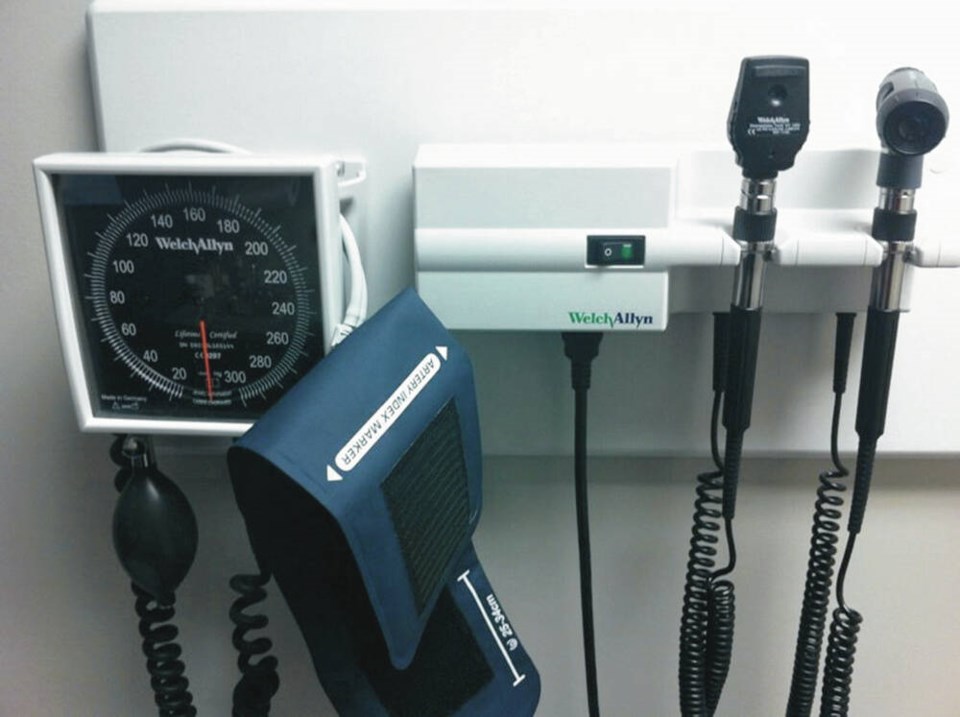In 2016, then-provincial health officer Dr. Perry Kendall proclaimed a public health emergency in response to a rapid increase in overdose deaths.
Yet urgent as that situation remains, it pales in comparison with the crisis that now envelops family medicine across our province.
Throughout B.C., about 700,000 people do not have a family doctor.
In Greater Victoria an estimated 100,000 residents, more than a quarter of the region’s population, can’t find a GP. In addition we’re seeing a continuing decline in the number of walk-in clinics.
In essence, the bedrock of any competent health-care system — universal access to primary care — is crumbling before our eyes.
Three factors have brought our family practice system to the brink of collapse. First, as our population ages, the demands placed on family doctors have grown exponentially.
Their patients are older, sicker and often in need of multiple therapies to deal with chronic maladies. Advances in medical science have also created more complex treatments for these patients.
In this instance, we can extend a degree of sympathy to those in charge, both politicians and administrators. While this was a foreseeable challenge, nevertheless it was unprecedented. Never before have we seen a demographic shift of this nature or extent.
After that, though, no further excuses can be offered.
The second factor is a failure by successive provincial governments to fund the health-care system adequately, and to work with physician groups to create rewarding, high-quality work environments.
As to funding, between 2011 and 2018, provincial expenditures on health care rose by an estimated 2.5 per cent per year. Here is a major cause of the dysfunction we see around us.
Funding increases on that scale are far below what would have been needed to meet both inflation, which alone grew by 2.9 per cent annually over that period, and population growth of one per cent annually.
Moreover, health costs traditionally rise faster than the background inflation rate, due in part to rapidly increasing drug prices.
Taking these components into consideration, it’s a fair estimate that over the seven-year period in question, health care was underfunded by at least $3 billion, if not more.
Mixed in with the funding issue is the near incomprehensible fee structure through which doctors are remunerated.
A fee contract negotiated by Doctors of B.C. and the province lays out what fees can be charged for what services. But it runs to 494 pages and is frequently criticized for overvaluing some services, and undervaluing others.
It sometimes fails to recognize new forms of treatment, and often ignores much of the administrivia that plagues family practice.
A number of physicians, active and retired, have written to the Times Colonist noting the near-unbearable burden imposed by layer upon layer of government regulations.
Time that should be spent with patients is frittered away on form-filling and hoop-jumping. This is a massive waste of an all-too-scarce resource.
The third factor contributing to the collapse of family medicine rests with doctors themselves.
Physicians want to provide high-quality, rewarding and remunerative care that makes best use of their training.
But there is a lingering attachment to the traditional model of medical practice as a form of private business. Many physicians still wish to remain at arm’s length from government, and run their clinics as they see fit.
While this does offer the lure of independence, it brings with it all the administrative headaches of managing a business operation.
This model also tends to isolate family physicians from other caregivers such as physiotherapists, psychiatrists, nurses, pharmacists and so on. That tends to inhibit delivery of the broader service required by patients with complex health conditions.
Lastly, the existing fee-for-service system is a barrier to reform.
Provincial governments across the country have spent the past 50 years trying to negotiate an alternative model, and largely met with failure.
Inadequate as it is, this model represents for many doctors a way to match their income to their needs. A physician who wants a higher income can simply see more patients and bill accordingly.
Others have a lower target, and treat only as many patients as required to meet that income.
But that means efforts by government to raise physician fees may have unintended consequences. If fees go up, doctors can see fewer patients and still meet their target income.
What, then, can be done?
It’s clear, given the complexity of the problem, that none of the participants acting alone can bring about reform. There is too much frustration and anger for that to work, too many opposing camps.
The current round of physician bargaining does present an opportunity to fix at least some part of this long-standing problem. But that won’t be sufficient.
Some form of time-limited task force is needed, with representation from everyone involved — doctors, officials from the health and finance ministries, oversight bodies such as the College of Physicians and Surgeons, and most important, patient groups.
Their mandate is to identify in detail the various causes of this crisis, and propose solutions. It would help if a step by step approach could be suggested.
For instance, it’s unlikely that many doctors would agree to abandon entirely the fee-for-service model. So propose a two-year experiment, allowing physicians to try out a different system, with the assurance that they can revert to fee-for-service if the new model is too confining.
Likewise, it isn’t feasible to scale back the mountain of regulations all at once. So lay out a timetable with targeted reductions each year.
And produce a blueprint for family practice that brings together in one location the various caregivers required to address the full range of patient needs.
Would this succeed? Certainly such a task force would have to invite broad consultation. No one should feel left out.
But the province must also make clear that regardless of entrenched opposition in some quarters, a solution must be found.
As things stand, failure is not an option.



